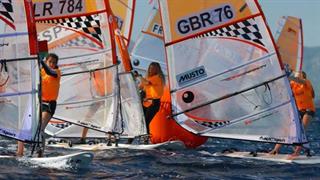
| Home |
| Organisation |
| Competition |
| Women |
| Connect to Windsurfing |
| Environment |
| Archive News |
| - IWA Newsletters |
| Contact |
Archive News
Fifty Years of Fun and Function Posted On: 11/05/2018 08:49:11 | |
 | |
When I was a junior sailor during the 1970s, fleets of Sabots, Lasers, and Lehman 12s crisscrossed the channels of Marina del Rey during our summer evening races. It was a quintessential Southern California scene every night - until the windsurfers showed up out of the blue. I'll never forget the first time a fleet of them participated. It was the start of a ground breaking movement. Hoyle and Diana Schweitzer, founders of the company that would eventually manufacturer the ground breaking Windsurfer, were members of California Yacht Club, and that night, they corralled their posse of beach pals to showcase what would soon change the world of sailing. The Schweitzer kids were in the junior program, so I made sure I got my hands on a windsurfer. It became a fun diversion, but also an incredible teaching tool. Without realizing it at the time, I learned the effect of rig rake on the helm, and what rig cant did to lift. Not again in my sailing life would I learn so much by just messing around. It's a shame today that this experience is not widely shared among youth sailors in the USA. Only in a few pockets is windsurfing emphasized, as when youth sailing got hyper-organized in the 1980s, the focus was narrowed to doublehanded-type boats, and a path was formed which would extend from youth sailing, through high school, and to college. Progress… But elsewhere in the world, windsurfing is hugely active, and as windsurfing celebrates its 50th anniversary since the birth of the first patented Windsurfer design, the sport continues to lead the way with regards to both participation, adrenaline, and athleticism at all levels as it evolves to suit new formats and demands. From its humble beginnings as a popular beach sport, windsurfing has grown and developed to cover a wide range of both disciplines and equipment. This means that windsurfing is able to offer a true lifetime of sailing in the sport from a dedicated pathway for racing from 8 years old through to equipment and formats that keep people active and sailing until late on in life. Through all of this, the Techno and RS:X Class associations have been pivotal in leading in promoting the sport of sailing around the world as a fun and energetic activity. With such accessible entry level in the Techno Class, events have reached the dizzy heights of over 300 competitors at class World Championships. From there, sailors with Olympic ambitions are passed onto the RS:X Class where their skills are refined and their fitness is honed. | |
website content © International Windsurfing Association, design by AWNet Limited © Christopher Gibson